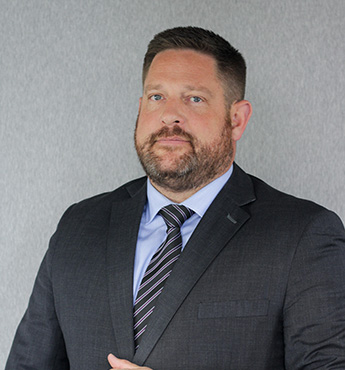Utah Premises Liability Law: Your Guide to Winning Cases in 2025
Losing a premises liability case in Utah can be costly and frustrating. Legal fees, expert witnesses, and court time add up quickly, often with no compensation. The key to success? Choosing a strong case from the start. Utah premises liability attorney Jake Gunter helps clients identify viable claims.
Understanding Premises Liability in Utah
Premises liability holds property owners accountable for injuries caused by unsafe conditions. However, Utah law sets strict requirements for proving liability. Here’s what you need to know:
1. The Role of “Notice” in Utah Premises Liability
Property owners must have actual or constructive notice of a temporary hazard and a reasonable opportunity to fix it. For example, if corn husks fall on a grocery store floor and no one reports it, the owner may not be liable. Without notice, your case may not hold up.
2. Exception: Hazards Created by the Property Owner
If the owner or an employee causes the hazard, notice is presumed. For instance, if a store worker spills water and doesn’t clean it, the owner can be held liable without prior warning.
The “Open and Obvious” Defense in Utah
The “open and obvious” doctrine is a common defense in Utah. If a hazard is clearly visible and avoidable, the injured party may be held responsible. This defense can:
- Reduce your compensation
- Bar recovery entirely
Juries often decide if a hazard was “open and obvious,” but in clear cases, judges may dismiss claims before trial.
Types of Property Hazards in Utah
Hazards fall into two categories, each with unique legal considerations:
3. Permanent Conditions
These are long-standing issues, such as:
- Faulty staircases
- Sloped sidewalks
- Structural design flaws
- Persistent ice due to poor building design
Courts often assume owners have notice of permanent hazards, strengthening these cases.
4. Temporary Conditions
Short-term hazards include:
- Snow and ice buildup
- Spilled liquids
- Construction debris
- Unmarked holes or objects
The key question: Did the owner know or have a reasonable chance to know about the hazard?
What Makes a Strong Utah Premises Liability Case?
Winning cases share these traits:
5. Serious Injuries
Severe injuries improve your chances of success. Examples include:
- Traumatic brain injuries
- Spinal damage
- Permanent disability
- Wrongful death
6. Gross Negligence
Cases involving gross negligence—reckless disregard for safety—are stronger. Examples include:
- 1/4 inch of water left by staff without warning signs
- Unbarricaded large holes in high-traffic areas
- Dilapidated staircases violating building codes
What Weakens a Utah Premises Liability Case?
Avoid these red flags:
7. Open and Obvious Hazards
If a hazard was easily avoidable—like a large post at eye level—the defense may argue you weren’t paying attention.
8. Minor Injuries
Twisted ankles or bruises rarely justify a lawsuit. Severe injuries can sometimes overcome weaker liability facts.
9. Lack of Notice
If the owner didn’t know about the hazard and couldn’t reasonably have known, your case may fail.
10. Snow and Ice Cases
Snow and ice cases are tough in Utah due to their temporary and unpredictable nature.
Contact Utah Premises Liability Lawyer Jake Gunter
Injured on unsafe property? Attorney Jake Gunter offers:
- Free consultations
- No fees unless you win
- Proven success in Utah courts
Call or text (801) 373-6345 to discuss your case today.
Frequently Asked Questions (FAQs)
1. What is the statute of limitations for premises liability in Utah?
You typically have four years from the injury date to file. Government property claims may have shorter deadlines, and cases involving minors or death may vary. Consult a Utah personal injury attorney.
2. What is “gross negligence” in premises liability?
Gross negligence is reckless disregard for safety, such as ignoring a known hazard. Utah jury instructions define it as “carelessness or recklessness showing utter indifference to consequences.”
3. Can I recover damages if I was partially at fault?
Yes, Utah’s comparative fault rules allow recovery if you’re less than 50% at fault. If you’re 50% or more at fault, you recover nothing.
4. Are snow and ice cases always unwinnable?
Not always, but they’re challenging. You must prove the owner had notice and failed to act responsibly.
5. What’s the difference between temporary and permanent hazards?
Temporary hazards (e.g., spills) arise suddenly, while permanent hazards (e.g., faulty stairs) stem from long-term design or maintenance issues.
6. What damages can I recover?
You may recover medical expenses, lost wages, pain and suffering, and, in severe cases, punitive damages.
Why Choose Jake Gunter?
With 20 years of jury trial experience, Utah personal injury attorney Jake Gunter knows how to build strong premises liability cases. Don’t risk time and money on a weak claim. Let Jake’s expertise guide you.
Contact Jake Gunter today at (801) 373-6345 for a free consultation and take the first step toward justice.
Learn More About Utah Accident Lawyer Jake Gunter 
For additional insights on Utah personal injury law and to get to know Jake Gunter better, check out these helpful videos:
- Meet Jake Gunter – Learn more about Jake Gunter’s background, experience, and dedication to helping clients throughout Utah.
- How to Choose a Utah Personal Injury Attorney – This video offers guidance on selecting the right personal injury attorney to ensure you receive effective representation.
- What Jake Gunter Does and Who He Represents – Discover the types of cases Jake Gunter handles and how he advocates for the rights of injured individuals statewide.
These resources will provide you with valuable information as you consider your legal options. For any questions or to schedule a free consultation, feel free to reach out to us directly.

